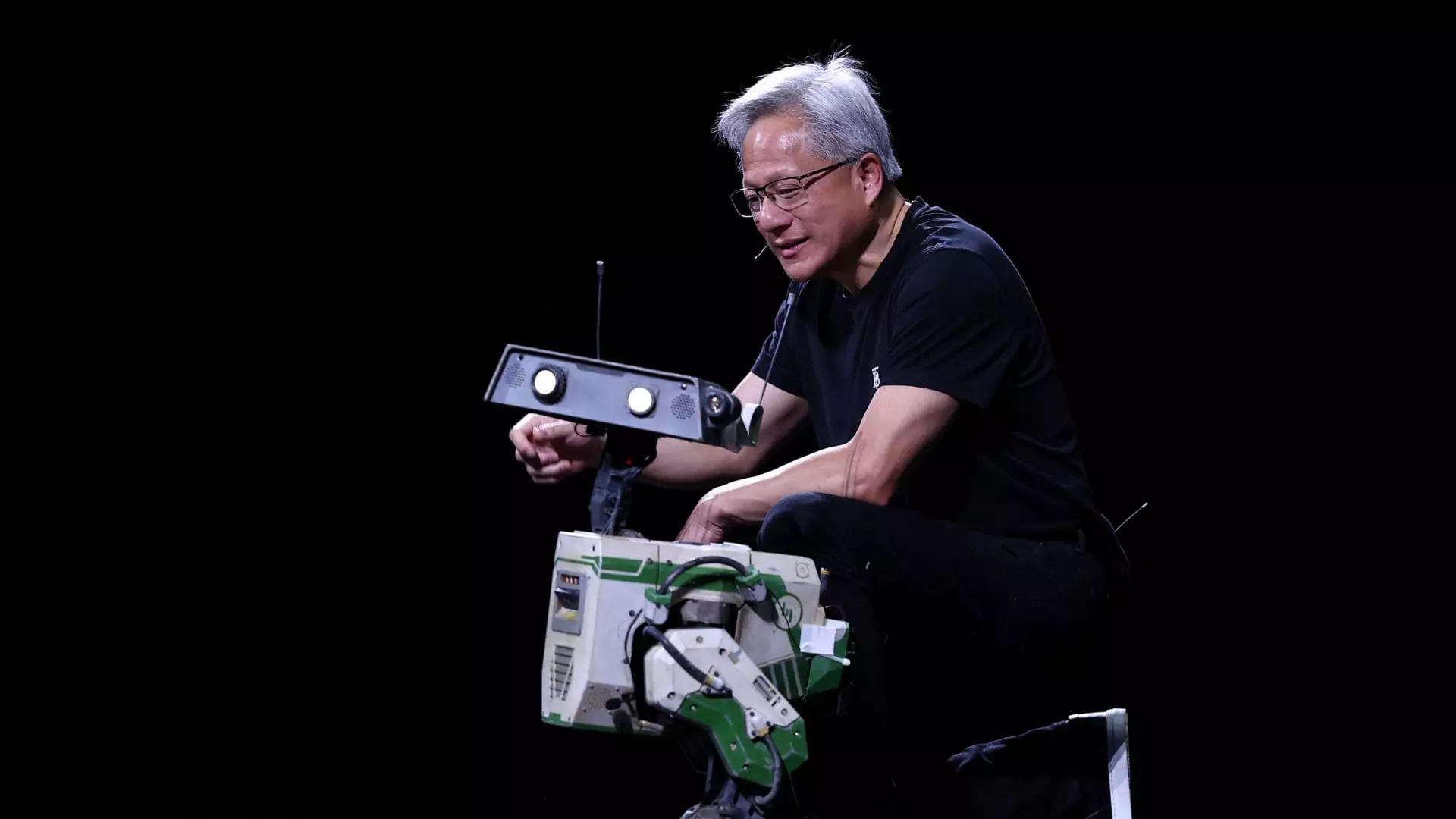Nvidia’s visionary CEO, Jensen Huang, has made headlines yet again, this time by spotlighting the extraordinary potential of robotics as a key growth avenue alongside artificial intelligence (AI). At the most recent shareholders meeting, Huang articulated a compelling vision that positions Nvidia not just as a chip manufacturer, but as a pioneering force in the integration of cutting-edge technology across diverse sectors. His assertion that AI and robotics could herald a multitrillion-dollar growth opportunity encapsulates the essence of a rapidly evolving digital landscape, where companies must adapt or risk obsolescence.
The strategic consolidation of Nvidia’s automotive and robotics divisions into one business unit marks a significant pivot in how the company envisions its future. A little over a year ago, this shift was not merely cosmetic; it was a restructuring driven by the burgeoning interaction between robotics and AI applications. The impressive growth figures reported—in which Nvidia’s automotive and robotics sectors surged by 72% annually, resulting in $567 million quarterly earnings—underscore the potential and urgency of this transition. While this revenue currently represents a mere fraction of Nvidia’s total earnings, the trajectory indicates a steep upward climb that could redefine the industry.
The Self-Driving Revolution
The prospect of self-driving cars stands at the forefront of Nvidia’s ambitions, serving as a launchpad for the widespread adoption of automation technologies. Huang emphasized that these vehicles would be the first significant commercial application of Nvidia’s sophisticated robotics solutions. This distinguishes Nvidia in an increasingly competitive marketplace, as it not only produces the powerful graphics processing units (GPUs) that are integral to AI but also envisions a holistic ecosystem where these technologies coexist and catalyze each other’s evolution.
One cannot overlook the implications of Huang’s claim that Nvidia’s AI chips will be vital in training the software powering both self-driving vehicles and robots. This interconnectedness hints at a future where autonomous technology relies heavily on a single infrastructure—Nvidia’s. The Drive platform, already utilized by major automotive players like Mercedes-Benz, exemplifies how Nvidia strategically blends hardware and software to lead the charge in self-driving innovation. By ensuring that the building blocks of automation come from a single source, Nvidia is poised to dominate the AI and robotics segments for years to come.
Nvidia’s Emergence as an AI Infrastructure Provider
Huang’s assertion that Nvidia is evolving from a traditional chip company to an “AI infrastructure” provider is a paradigm shift that warrants serious attention. The landscape of technology is rapidly changing, and companies must evolve their brand and business model to meet new demands. Gone are the days when a firm could solely rely on hardware sales for sustenance; the future is an interconnected web of software, services, and support.
Nvidia’s strategic decisions, including the introduction of complementary technologies like cloud services and networking chips, signal a deep understanding of modern enterprise needs. As AI becomes increasingly prevalent in diverse industries, the requirement for robust architecture to support these technologies will only grow. By providing a comprehensive suite of tools necessary for building and operating AI applications, Nvidia is not just selling products; it is providing a full-fledged platform that businesses can rely on. This ability to adapt and expand its offerings positions Nvidia as a linchpin in the AI and robotics movement, and it reflects a forward-thinking mentality that many firms could benefit from emulating.
The Road Ahead for Robotics and AI
Huang’s statements resonate with a sense of urgency and excitement about what lies ahead. His vision of a world populated by billions of robots and hundreds of millions of autonomous vehicles paints a futuristic scenario that may well be closer than we think. As investor confidence continues to soar—evident from Nvidia’s record market cap—there’s palpable excitement within the technological community about how this unfolding landscape will impact industries ranging from manufacturing to transportation.
Nvidia, under Huang’s leadership, appears poised to not only survive but thrive in this new era of technology. By anchoring its growth strategy in the dual pillars of AI and robotics, Nvidia is not merely participating in the industry’s evolution; it is actively shaping it. This bold approach reinforces the notion that the company is no longer just a contributor but a leader in the technological revolution that promises to redefine life as we know it.

